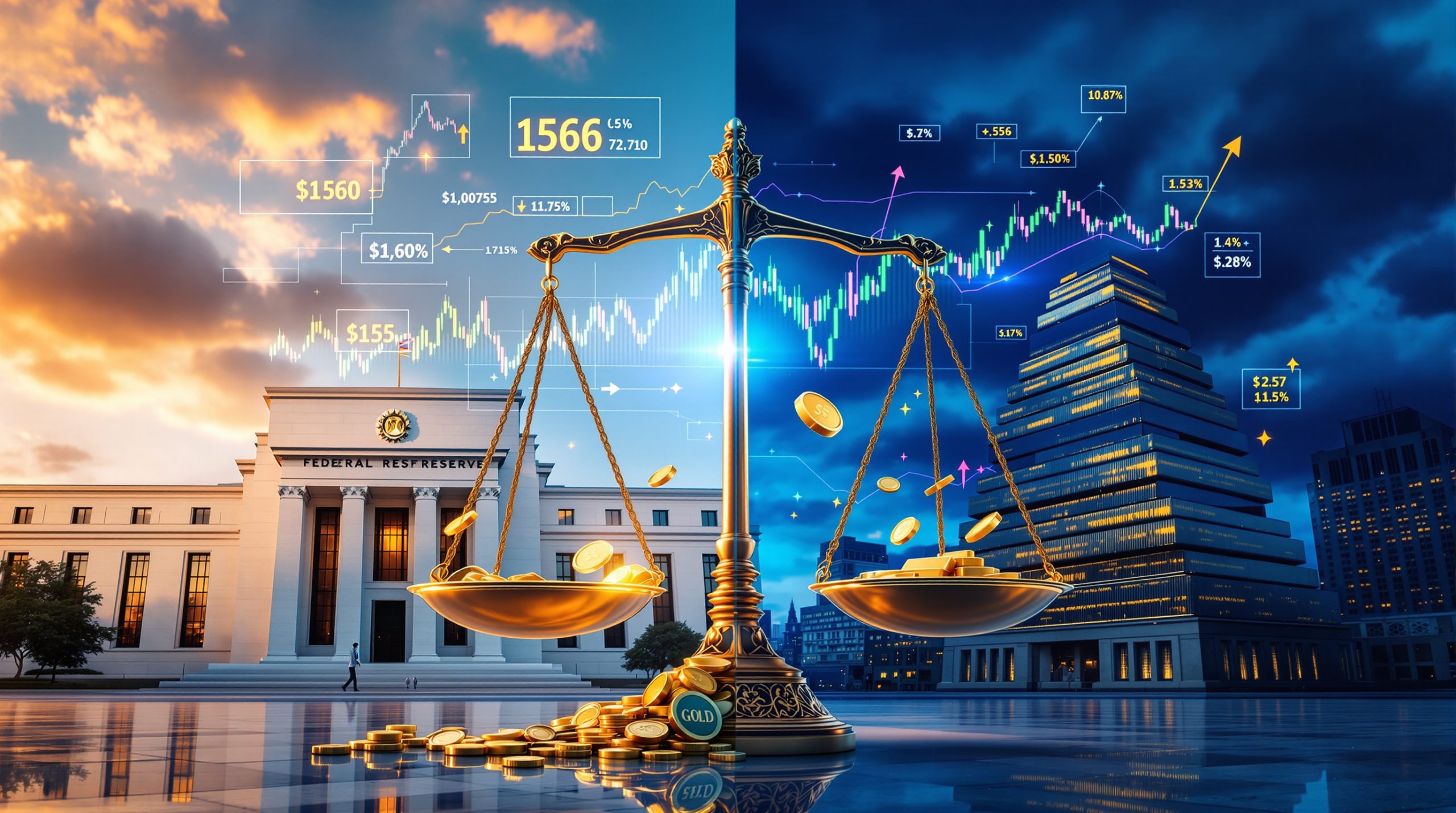Understanding Gold and Silver Markets: A Comprehensive Analysis
Gold and silver markets are undergoing profound transformations driven by changing monetary policies, physical demand pressures, and evolving global economic conditions. This analysis explores current trends, investment strategies, and the shifting dynamics between physical and paper markets that every precious metals investor should understand.
What Are the Current Trends in the Gold Market?
The gold market continues to demonstrate remarkable resilience despite significant volatility. Several key trends are reshaping how this precious metal trades and the fundamental drivers behind its price movements.
The Long-Term Value Proposition of Gold
Gold's enduring role as a store of value has become increasingly apparent as global monetary systems face unprecedented challenges. While currencies fluctuate and depreciate, physical gold maintains its purchasing power—not because gold is becoming more valuable, but because currencies are becoming less valuable.
As Craig Hemke notes, "Central bank demand has underpinned the gold price now for three or four years," establishing a solid foundation for continued strength. This sovereign-level buying represents a fundamental shift in how nations view gold as a strategic gold investment rather than simply a tradable commodity.
Central Bank Accumulation Driving Demand
One of the most significant developments in the gold market has been the substantial increase in central bank purchases. Countries including Kazakhstan, Turkey, and Poland have been systematically converting dollar reserves to gold, creating persistent demand regardless of price fluctuations.
This trend represents more than typical market buying—it signals a strategic reassessment of gold's role in the global monetary system. Central banks added over 1,000 tonnes of gold to their reserves in recent years, with emerging market central banks leading the accumulation.
Basel III Implementation and Market Structure Changes
The implementation of Basel III regulations has created a fundamental bifurcation in how gold trades:
- Physical gold markets now require actual metal backing for transactions
- Paper markets continue operating with leveraged positions, but with decreasing influence
This regulatory framework classifies physical gold as a Tier 1 high-quality liquid asset, while unallocated gold positions face a 20% haircut on balance sheets. The result is increasing pressure on paper gold markets as liquidity shifts toward physical settlement platforms.
"Basel III has restructured how banks must account for gold on their balance sheets, essentially recognizing physical gold's role as a Tier 1 asset while penalizing paper positions." — Andrew Maguire
How Has the Silver Market Been Performing?
Silver continues to present a compelling case for significant price appreciation based on fundamental supply-demand metrics, though paper market dynamics continue to influence its price discovery.
Physical Supply-Demand Fundamentals
The silver market faces a structural imbalance with an estimated 700 million ounce physical supply deficit accumulated over just the past four years. This deficit shows no signs of reversing as:
- Mining supply remains constrained
- Industrial demand continues growing
- Much silver production comes as a byproduct of copper, zinc, and other base metal mining
The imbalance between physical demand and available supply has created persistent pressure on available inventory, though this has yet to fully translate to price due to paper market dynamics.
Price Discovery Challenges
Silver continues to trade at a fraction of its historical ratio to gold, currently around 100:1 despite a traditional range of 50-60:1. This disconnect highlights the ongoing influence of paper market dynamics on price discovery.
The divergence between physical and paper markets becomes especially evident when examining backwardation signals, with spot silver consistently trading at a premium to futures contracts—averaging 6-9 cents and reaching as high as 12 cents. This unusual condition indicates physical tightness and potential underpricing in the futures markets.
Industrial Demand Drivers
Silver's dual role as both monetary metal and industrial commodity creates unique market dynamics. Industrial applications continue expanding in:
- Solar panel manufacturing (each panel uses approximately 20g of silver)
- Electric vehicle battery technology
- Electronics and electrical components
- Medical applications and antimicrobial uses
This combination of monetary demand and industrial consumption creates a powerful foundation for potential price appreciation once silver market squeeze influences diminish.
Why Are Physical Markets Gaining Importance?
The balance of power in precious metals markets is shifting dramatically from paper trading venues to physical exchanges, driven by several converging factors.
Declining Paper Market Liquidity
Open interest in gold futures has declined dramatically, falling from approximately 800,000 contracts to around 430,000 contracts. This reduction signals diminishing liquidity in paper markets as participants increasingly seek physical settlement.
Even more telling is the collapse in Exchange for Physical (EFP) volume, which has dropped from around 38,000 trades per day in early 2020 to often just 350-600 per day now. This dramatic reduction demonstrates the decreasing relevance of paper market mechanisms in the overall price discovery process.
Delivery Delays and Physical Tightness
Reports from major financial publications have highlighted significant delivery delays of 4-8 weeks for physical gold. These delays reflect genuine supply constraints and have contributed to growing concerns about counterparty risk in gold derivatives.
The European Central Bank specifically mentioned these risks in a recent financial stability review, warning about potential settlement issues in gold derivatives during periods of market stress—an unprecedented acknowledgment of physical market pressures.
Global Physical Exchange Development
New physical trading platforms are emerging globally, creating alternative price discovery mechanisms based on actual metal transactions:
- Shanghai International Gold Exchange
- Singapore gold exchange
- Hong Kong trading platforms
- Various other regional physical settlement venues
These exchanges share a common characteristic: they require full payment and allocation before trading, creating more transparent price discovery based on actual supply and demand rather than leveraged paper positions.
What Factors Are Influencing Recent Market Volatility?
Despite strong fundamentals, precious metals markets continue experiencing significant price volatility driven by several key factors.
Geopolitical Tensions and Market Reactions
Recent military conflicts have created volatile price reactions, with gold initially spiking during crisis events but often retreating afterward. This counterintuitive behavior highlights the complex relationship between geopolitical events and precious metals analysis.
As Hemke observes, "The headlines will drive you crazy, but as long as we've identified the long-term trend correctly, we can look past the day-to-day noise." This perspective is essential for maintaining conviction during volatile periods.
Institutional Positioning and Bank Influence
Major financial institutions have taken divergent positions on gold's outlook:
- Most major banks (Goldman Sachs, UBS, Bank of America) have adopted bullish stances, projecting prices reaching $3,700-4,000
- Outliers like Citibank have issued bearish forecasts, calling for declines to $2,500
These conflicting views often reflect institutional positioning and potential conflicts of interest, particularly when banks finance mining operations and encourage hedging programs. Understanding these motivations helps investors interpret seemingly contradictory market commentary.
Options Expiration Effects
Price action frequently targets key options strike prices near expiration dates, creating predictable volatility patterns. Recent trading saw gold precisely hit the $3,520 level—a key options sweet spot—before rebounding.
This pattern demonstrates how derivatives markets continue influencing short-term price movements despite declining paper market participation. Traders aware of these dynamics can better interpret price action around key technical levels and expiration dates.
How Is Physical Ownership Different From Paper Market Participation?
The distinction between physical metal ownership and paper market exposure represents a fundamental strategic choice for precious metals investors.
Risk Profile Differences
Physical metal ownership eliminates counterparty risk and provides direct exposure to the underlying asset, while paper market participation introduces leverage and settlement risk. These differences become particularly significant during periods of market stress when paper markets may disconnect from physical prices.
The growing awareness of these risks has contributed to increasing physical demand from both retail and institutional investors seeking to minimize exposure to financial system vulnerabilities.
Long-Term vs. Short-Term Perspective
Physical ownership aligns with long-term wealth preservation goals, focusing on gold and silver's monetary utility rather than short-term price fluctuations. This approach mirrors central bank strategies, which prioritize long-term protection against currency debasement over trading opportunities.
Paper market participation, by contrast, often focuses on short-term price movements and technical patterns. While this approach can generate trading profits, it introduces timing risks and potential disconnection from the metals' fundamental value proposition.
Empowerment Through Physical Ownership
Individual physical metal accumulation mirrors the strategic decisions being made by central banks and sovereign wealth funds. This parallel approach allows individuals to implement similar wealth preservation strategies as major institutional players.
As Hemke emphasizes, "Central banks are converting dollar reserves to gold—individuals should do the same." This alignment with sovereign strategies provides both validation and a strategic framework for private investors.
What Are the Implications of Government Deficit Spending?
The acceleration of government deficits creates powerful structural support for precious metals as currencies face increasing debasement pressure.
Accelerating Fiscal Deterioration
The United States continues to run unprecedented budget deficits, with recent monthly shortfalls exceeding $300 billion. The fiscal year is tracking toward a nearly $2 trillion annual deficit despite claims of economic expansion.
This fiscal deterioration creates unsustainable pressure on the monetary system, with approximately $10 billion in new debt added daily. The situation represents what Hemke describes as "the end of the great Keynesian experiment"—a debt-based monetary system requiring ever-increasing currency creation to avoid implosion.
The Monetary Policy Dilemma
Central banks face an impossible choice between continued currency creation or allowing a systemic collapse. As Hemke bluntly states, "They now have to keep printing or we crash. We've got this ticking time bomb."
This dilemma has profound implications for precious metals, which benefit from both scenarios—currency debasement in the case of continued printing, or safe-haven demand during financial system stress.
Gold as Protection Against Currency Debasement
The acceleration of deficit spending directly impacts currency values, making precious metals an essential hedge against purchasing power erosion. This relationship explains why gold all-time highs tend to occur in all currencies simultaneously during periods of coordinated monetary expansion.
Physical gold and silver ownership provides direct protection against this debasement, with their finite supply contrasting sharply with the unlimited creation potential of fiat currencies.
How Are Industrial Applications Affecting Silver Demand?
Silver's industrial demand continues growing through critical applications in emerging technologies, creating additional pressure on already constrained supplies.
Technological Innovation Driving Consumption
Silver's unique properties make it essential for numerous advanced technologies:
- Solar panel manufacturing requires approximately 20g of silver per panel
- Electric vehicle battery technology, including new Samsung batteries that may quadruple EV battery life
- Electronics and electrical components, particularly in high-reliability applications
- Medical applications leveraging silver's antimicrobial properties
These applications create persistent demand regardless of silver's price, as the metal represents a small but irreplaceable component in many finished products.
Vertical Integration Pressures
As supply constraints intensify, major industrial consumers face increasing pressure to secure their supply chains. This could lead to vertical integration similar to how McDonald's eventually took control of potato production for its french fries.
Maguire draws this parallel explicitly: "Companies may need to 'grow their own potatoes' by establishing direct relationships with mines to ensure supply continuity." This vertical integration would bypass traditional market mechanisms, potentially removing significant physical metal from market circulation.
Tesla's Direct Sourcing Model
Tesla has pioneered direct mineral sourcing from mines, establishing a potential template for other industrial consumers. This approach removes intermediaries and could significantly impact traditional market structures if widely adopted.
As more companies follow Tesla's lead, the available silver supply for investment demand could decrease substantially, creating additional pressure on prices despite paper market influences.
What Technical Patterns Are Emerging in Precious Metals?
Technical analysis provides valuable context for understanding market psychology and potential price trajectories in precious metals.
Gold's Breakout After Consolidation
Gold spent approximately three and a half years consolidating below $2,000 before finally breaking out in late 2023. This lengthy base-building period created the foundation for the subsequent powerful advance.
The importance of this consolidation period cannot be overstated—it represented necessary digestion of previous gains and established the base for gold's move above $2,400. Similar patterns have preceded previous major advances in gold's price history.
Silver's Potential Momentum Shift
Silver is approaching significant technical milestones that could trigger institutional interest and potential price acceleration:
- Potential new monthly closing highs not seen since 2011
- Approaching quarterly all-time highs around $37.60
- Annual closing high of approximately $32
These technical levels represent potential trigger points for increased institutional participation, especially as silver approaches its all-time high of $50. Silver's characteristic behavior includes periods of underperformance followed by explosive upside moves once key resistance levels break.
The Stair-Step Pattern
Both metals appear to be establishing higher support levels through a "stair-step" pattern, where each consolidation period creates a new floor price. This pattern reflects physical market settlement at progressively higher levels.
The stair-step formation is particularly important because it demonstrates the market's unwillingness to return to previous price ranges after establishing new trading zones. This behavior suggests that despite short-term volatility, the overall trend remains firmly higher.
How Should Investors Approach Precious Metals Markets?
Developing an effective precious metals strategy requires understanding both market dynamics and personal financial objectives.
Physical Accumulation Strategy
A consistent approach of gradually acquiring physical metal provides protection against both monetary debasement and market volatility. This strategy aligns with central bank behavior and focuses on long-term wealth preservation rather than short-term price speculation.
As Hemke advises, "In the long term, you just got to keep accumulating because there's nothing that will protect you from the endgame of all this madness better than gold." This perspective emphasizes gold and silver's role as insurance against systemic risks rather than merely speculative investments.
Understanding Market Manipulation Limitations
While paper market manipulation continues, its effectiveness is diminishing as physical demand increases and regulatory pressures mount. Recognizing these changing dynamics helps investors maintain perspective during short-term price fluctuations.
The declining influence of paper markets creates both challenges and opportunities—increased volatility during the transition period, but ultimately more accurate price discovery based on physical supply and demand fundamentals.
Avoiding Technical Trading Traps
Excessive focus on short-term technical patterns can distract from fundamental drivers and lead to poor decision-making. Maintaining a broader perspective on physical supply-demand fundamentals provides a more reliable framework for gold investment strategies.
While technical analysis has value for understanding market psychology, it should complement rather than replace fundamental analysis of monetary conditions and physical market dynamics.
The Shifting Balance of Power in Precious Metals Markets
The precious metals landscape is undergoing a fundamental transformation as physical markets gain influence and traditional paper pricing mechanisms face increasing pressure. This shift reflects both regulatory changes and growing recognition of gold and silver's monetary role in an increasingly unstable financial system.
While short-term volatility continues, the long-term trajectory appears increasingly clear—a revaluation of precious metals reflecting their true supply-demand fundamentals and monetary utility. For investors, understanding this evolving landscape provides both context for current market behavior and guidance for strategic positioning.
"In the long term, you just got to keep accumulating because there's nothing that will protect you from the endgame of all this madness better than gold." — Craig Hemke
Disclaimer: The information provided in this article is based on expert opinions and market analysis from the cited sources. It should not be considered financial advice. All investments involve risk, including precious metals. Past performance is not indicative of future results. Readers should conduct their own research and consult with financial professionals before making investment decisions.
Looking for the Next Major Mining Discovery?
Stay ahead of the market with real-time alerts on significant ASX mineral discoveries through Discovery Alert's proprietary Discovery IQ model, turning complex data into actionable insights for both gold and silver investors. Explore how historic discoveries have generated substantial returns by visiting the Discovery Alert discoveries page and begin your 30-day free trial today.




